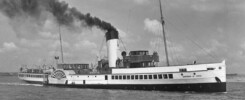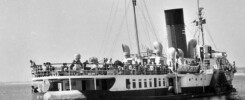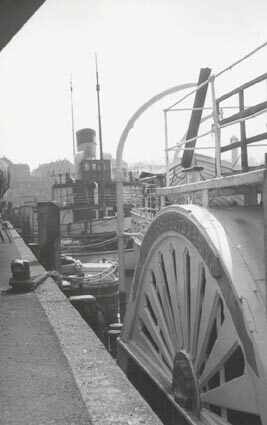
Now I live in Weymouth once again I walk around the harbour pretty much every day and it does look so empty. No ships at all and most particularly no paddle steamers. My mind automatically goes back to my childhood when the harbour was filled with ships including paddle steamers, Consul, Embassy, Monarch, Princess Elizabeth and visitors like Bristol Queen and Sandown.
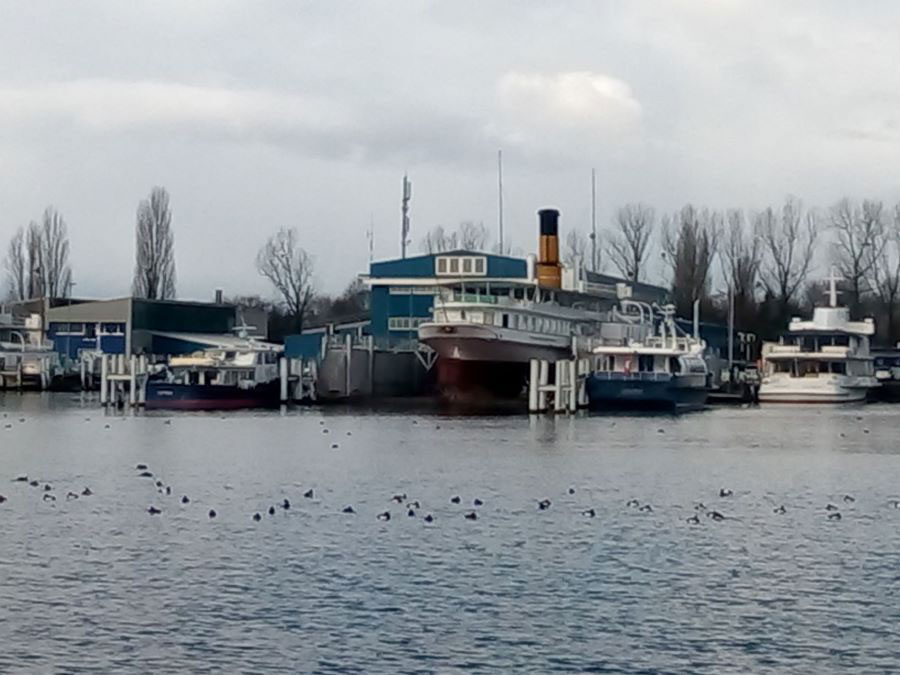
Then I go to Lausanne Ouchy, as I often do in winter, and the chantier there is still stuffed full of paddle steamers, up to eight of them, six currently in summer service, one laid up and another, Rhone, about to be rebuilt from April this year. Then I ask myself why is this so different from the UK? How come they can do it and we can’t?
Well, the lake itself has some advantages. There are three honey-pot hubs, Geneva, Lausanne and, at the eastern end of the lake, the tourist laden towns of Montreux and Vevey. Add to that the spectacular scenery, a famous castle at one end of the lake, a medieval town at the other and commuter services between Lausanne and Evian and Nyon and France to pack in the Swiss francs for the business on a year round basis. Because it is so large it can sometimes get a bit rough but it is rarely too rough for the paddle steamers to sail. There are occasional cancellations when it is very seriously windy but they are very few and far between so the services are reliable. The paddle steamers themselves are also very cost effective to run having core operational crews of between just 4 and 6 only.
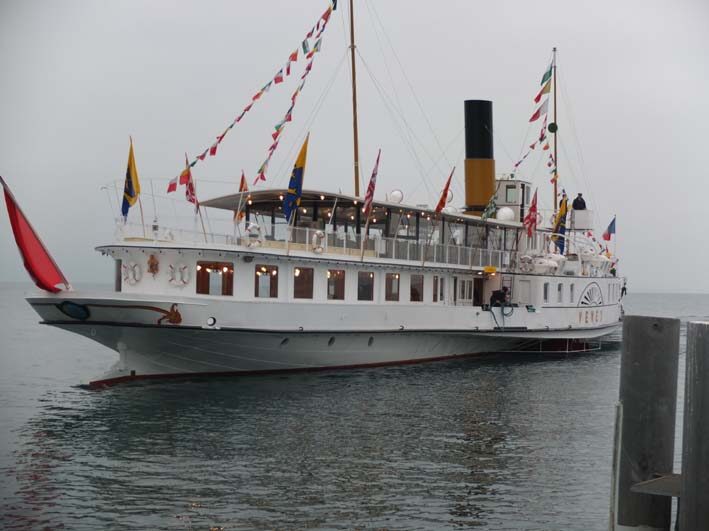
Then, some years ago now, they revamped their excursion business model considerably. Before that it was possible in summer to take long 12 hour day trips by paddle steamer from one end of the lake to the other and back. Now this is not offered. Instead there are shorter trips available within different segments of the lake, the longest of which is between Lausanne and Geneva which takes around three hours each way.
Other than that the paddle steamer trips are for morning, afternoon and evening cruise circuits of different parts of the lake tapping into different market segments along the way. There is the run from Geneva taking in Nyon and the lovely medieval town of Yvoire which takes a couple of hours. It is about three hours for the round trip from Lausanne to St Gingolph returning along the touristy Swiss coast between Chateau Chillon and Lausanne. Then there is the circular from Vevey and Montreux to St Gingolph three times a day plus, in the cool of the evening, a circuit from Lausanne to Yvoire.
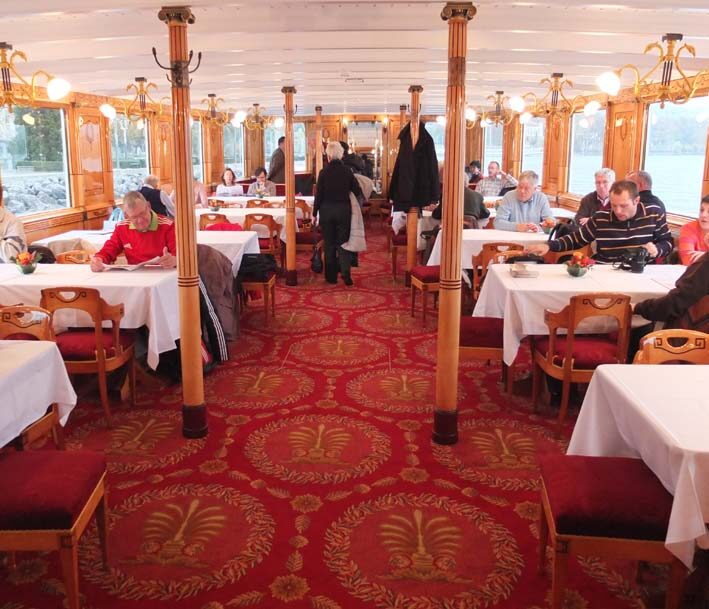
Good food is also a part of these trips and that is achieved by another clever business model which overcomes space limitations on the ships as well as providing a service for what is a moneyed clientele. Although the steamers have galleys all the major prep is done ashore in the company’s catering premises and brought down to the ships substantially ready to go. Usually they serve up to around 100 covers for a meal, the capacity of the paddle steamer’s dining saloons, but they can cope with up to 200 covers on some of the paddlers by including tables and chairs in the glass enclosed structures on the promenade decks. But that is it. More covers than that and the steamers have to return to base to pick up a new set of supplies and dinners.
Putting on food like this requires quality chefs, quality sous-chefs and other quality staff so within this business model they need to be capable of recruiting such people. In this they are aided by the fact that everybody lives ashore. The crew turn up for work. They do their shift. And then they go home. Of course using quality staff and quality food doesn’t come cheap either so you would be hard pressed to find a main course on a Lake Geneva paddle steamer for less than £20 a head. A three course dinner is likely to set you back £40+, exclusive of drinks, so dinner for two comes in not much short of £100. Travel on the PS Montreux, which is restricted to just 124 covers, and you can pay much more as the catering is provided by Ouchy’s premier hotel the 5* Beau-Rivage Palace.
There is an enthusiast presence in the background through the local Steamboat Friends but they see their role as supporting the paddle steamers and not running them. They have just stumped up a cool 3 million Swiss francs towards the 15.8 million rebuild of the Rhone with the balance being made up from 7.6 million from the Canton of Vaud, 4.2 million from the Canton of Geneva and 1 million from the Canton of Valais.
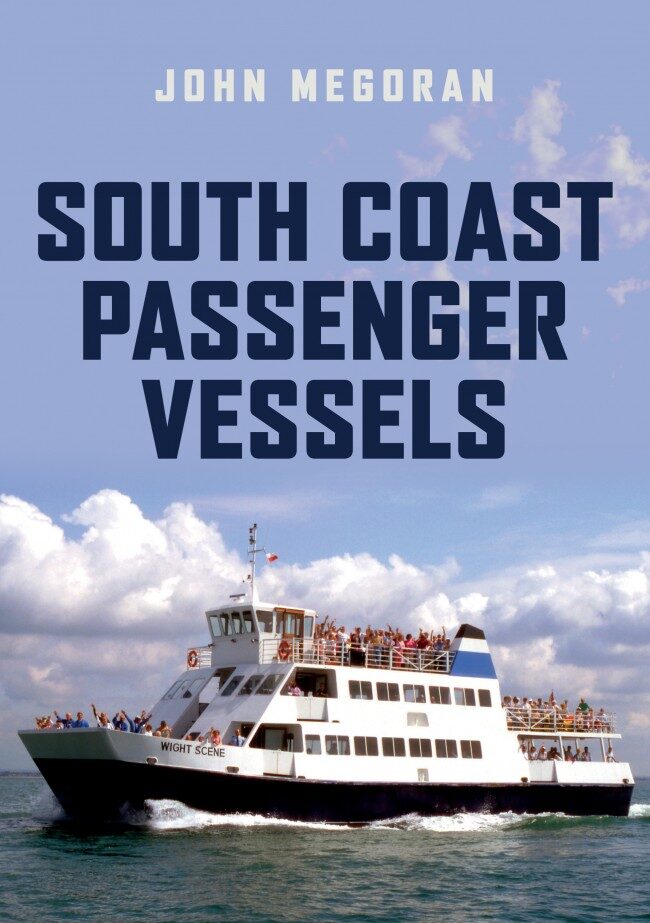
Of course Lake Geneva has its attractions but it is not unique in that. I spent much of last summer researching my next book “South Coast Passenger Vessels” (which is due out in April and currently is available to pre-order from Amazon or Amberley) and that buoyed me up considerably. Amazingly there are still more than 80 domestic vessels with MCA Passenger Certificates for between 12 and 350 passengers operating within an area bounded by Weymouth in the west and Newhaven in the east. Most run trips of an hour or two in length viewing some of the UK’s most spectacular scenery. That’s quite a lot of vessels with quite a lot of trip options. In Poole Harbour alone, for example, the two largest operators there can put more than 1,000 passengers afloat at any one time amongst their respective fleets of vessels.
Take a trip to Brownsea Island. View the Needles or the Jurassic Coast close up. Glide down Christchurch Harbour on boats with only 6 inches draft. Sail from Weymouth to Portland on a launch which delivered guns, ammunition and stores to the breakwaters during the Second World War. View the warships and ferries in Portsmouth Harbour. And so on.
None of these passenger vessels have MCA Class III PCs for extensive and long coastal voyages with all the hassle and expense which comes with that. Instead they run on Class IV, V and VI, which permits limited coastal operations to sea 15 miles from the departure point and not more than 3 miles from the shore. Sailing in predominantly more sheltered waters also gives them a greater reliability of operation. Just like Kingswear Castle, all are cost effective to operate with tiny crews of between two and five under the command of Boatmasters. Given the length of cruises they run, most offer drinks and snacks for sale with almost none providing any proper meals as part of their regular services. The only operator currently doing so out of the whole 80 of them is Red Funnel on their three car ferries. They sell fish and chips, a pasta dish and curry. That’s it.
So why couldn’t one or two of these modest sized vessels be driven by paddle wheels and be built to look like a paddle steamer of yesteryear? After all, there were plenty of smaller paddlers in earlier times. Why not now? Perhaps we should embark on a mission to do our best to encourage operators to think paddle wheels once again when they are pondering ordering their next boat as there is absolutely no reason why anybody can’t build a new ship which looks traditional. Of course it would have to comply with modern regulations on sub division and so on but that doesn’t stop anyone fitting, say, a straight stem, a counter stern, a stove pipe funnel and giving the ship a traditional look.
If the Swiss can run so many paddle steamers why can’t we? And don’t forget that these days steam railway engines are built new from scratch. Why not paddle steamers?
Kingswear Castle returned to service in 2023 after the first part of a major rebuild which is designed to set her up for the next 25 years running on the River Dart. The Paddle Steamer Kingswear Castle Trust is now fund raising for the second phase of the rebuild. You can read more about the rebuilds and how you can help if you can here.
John Megoran

